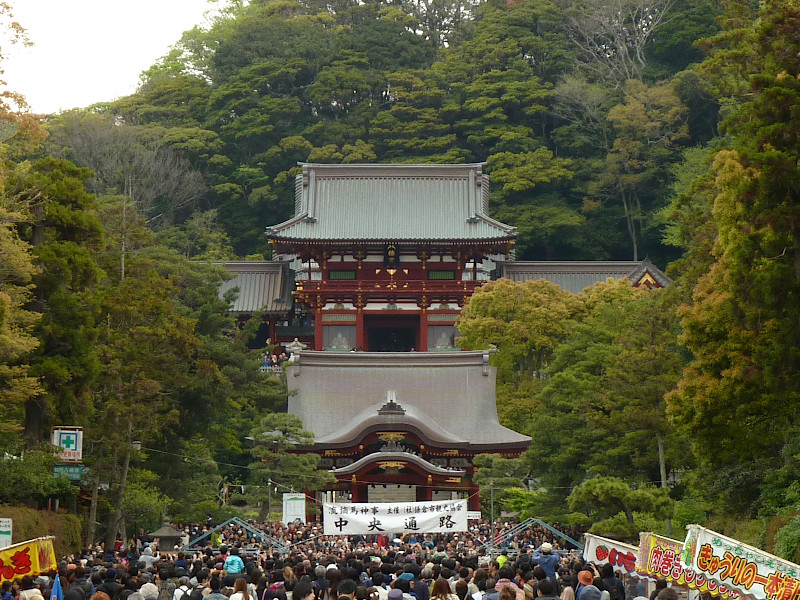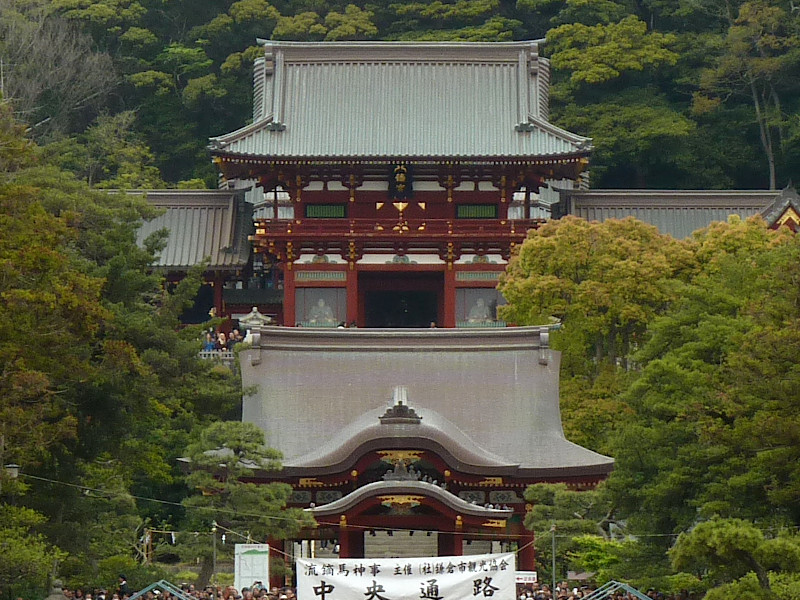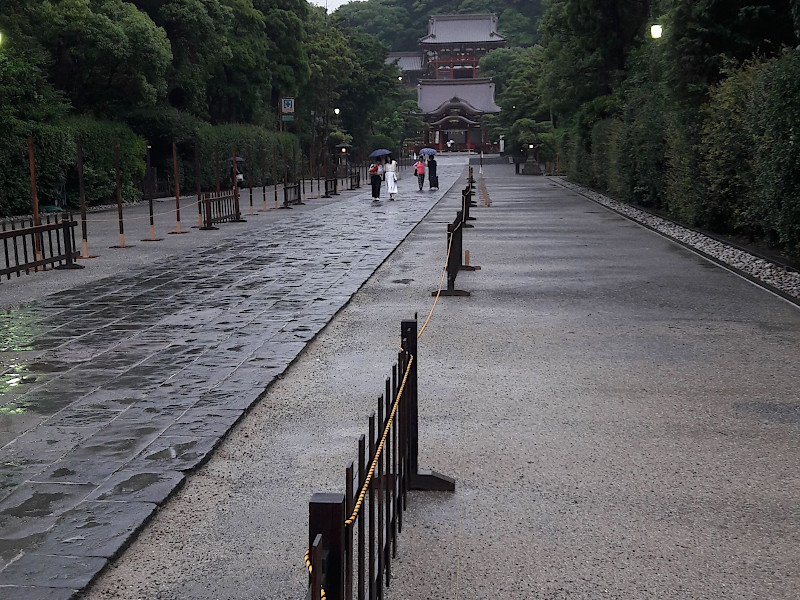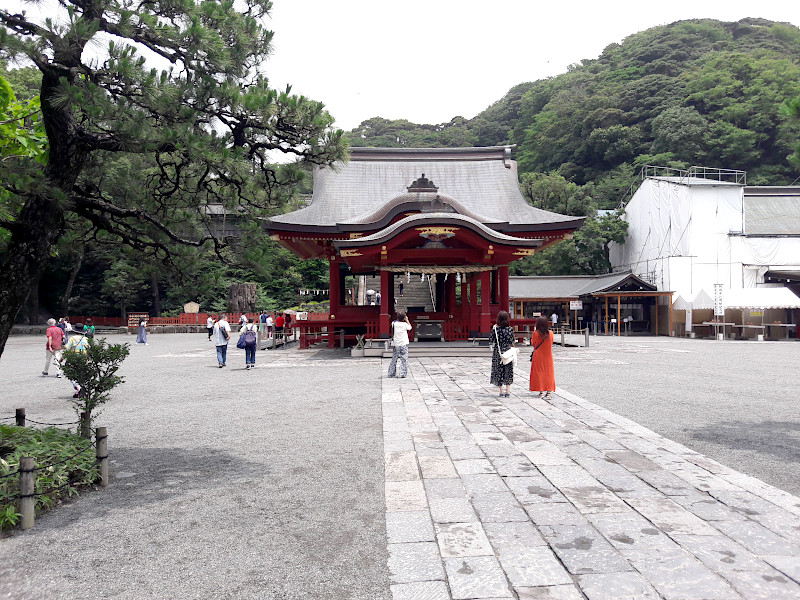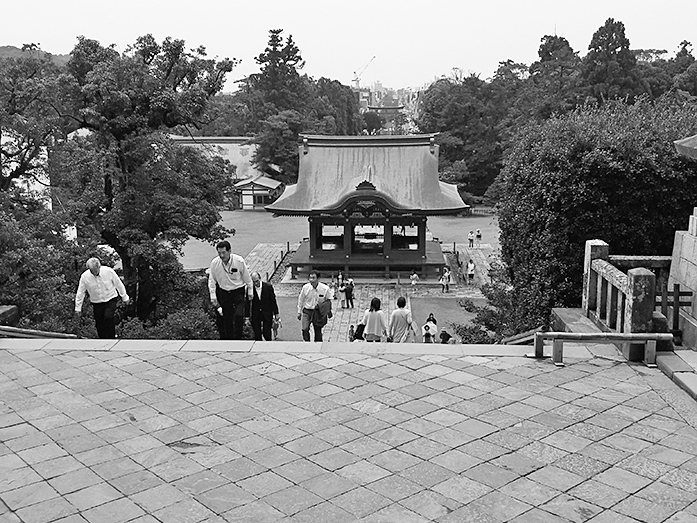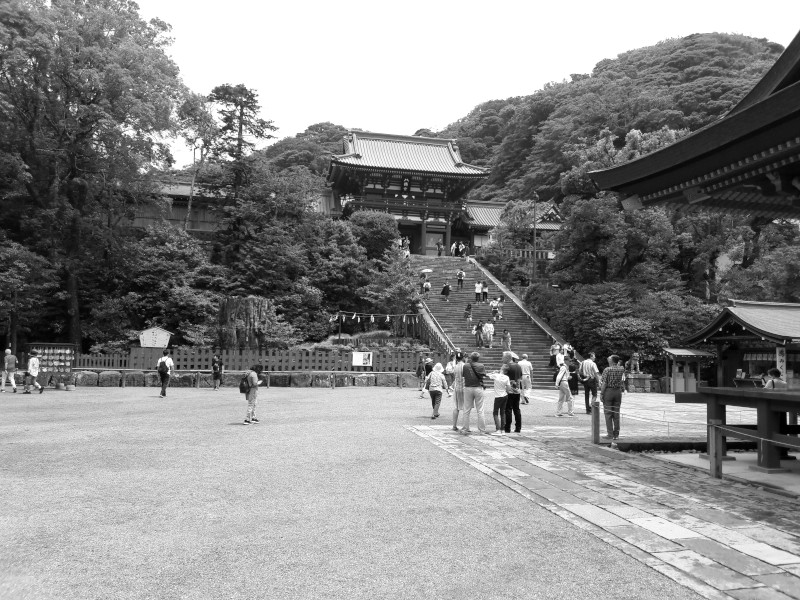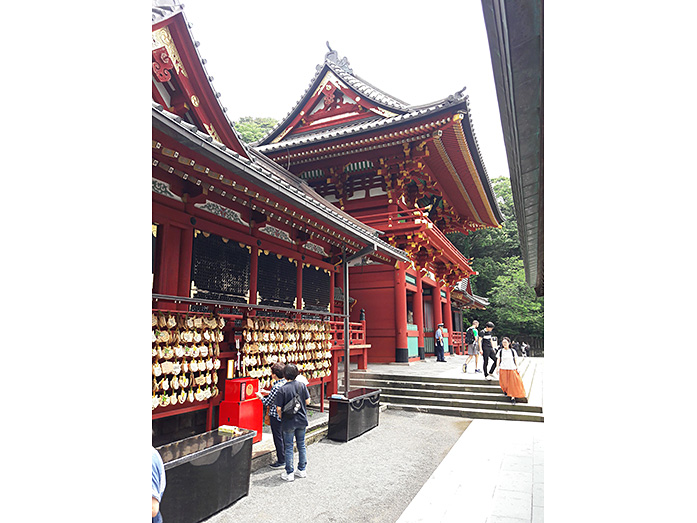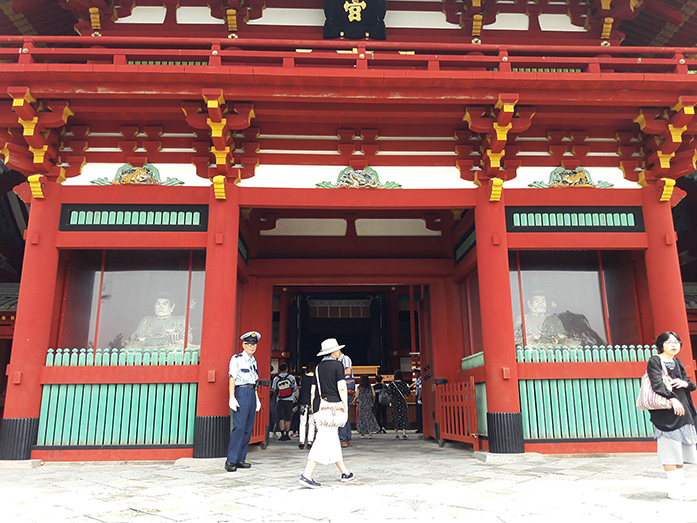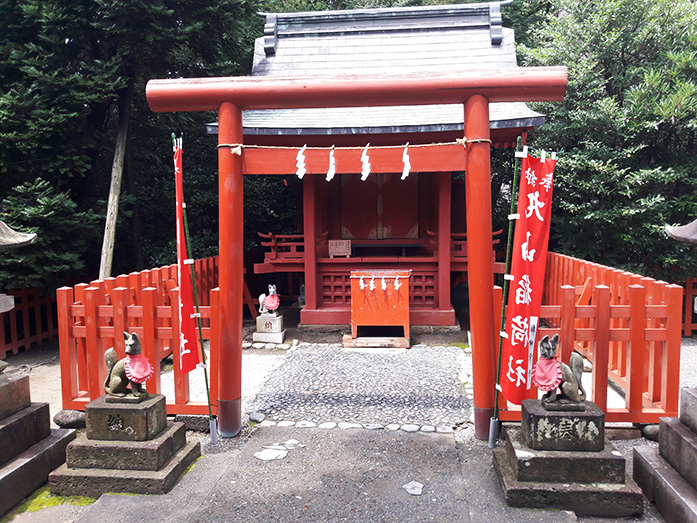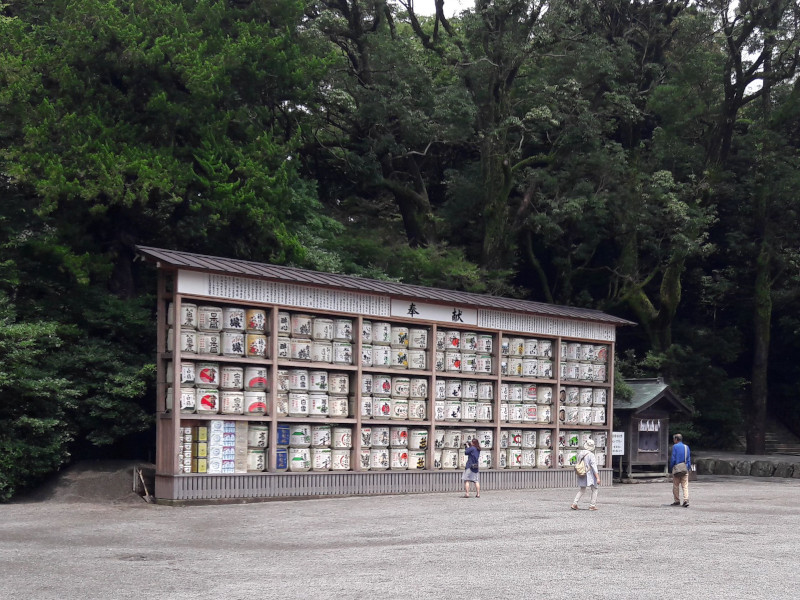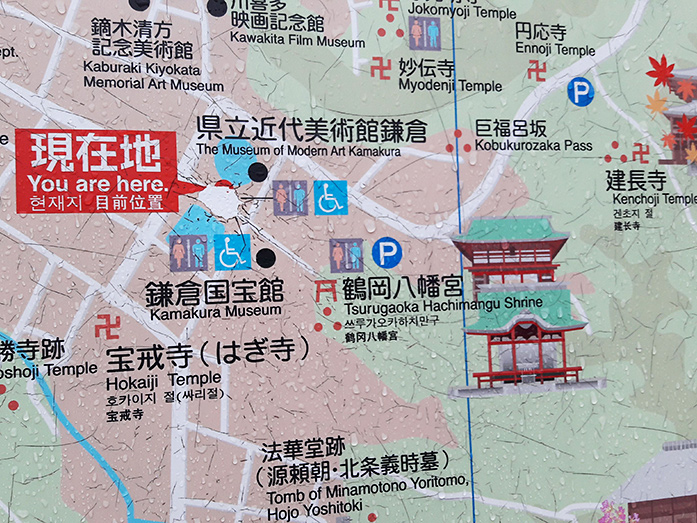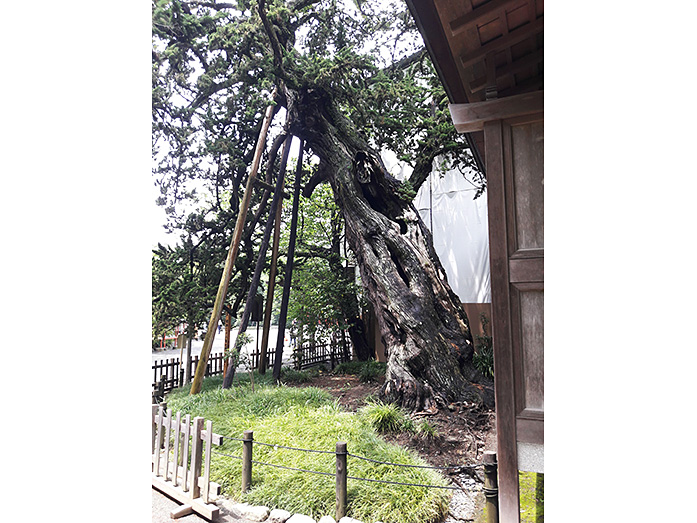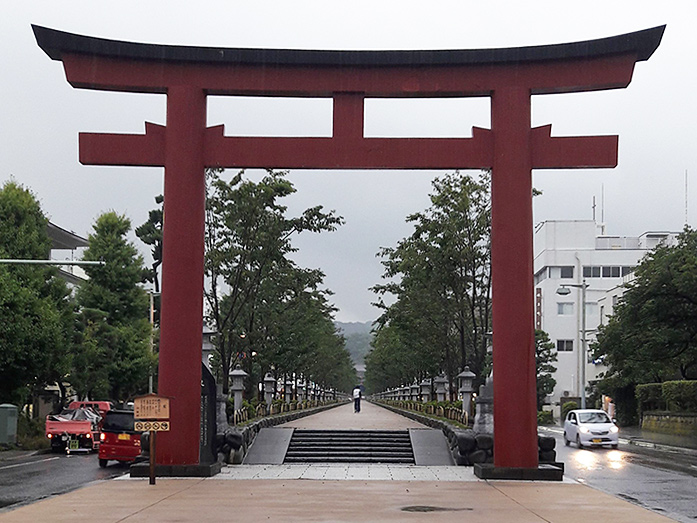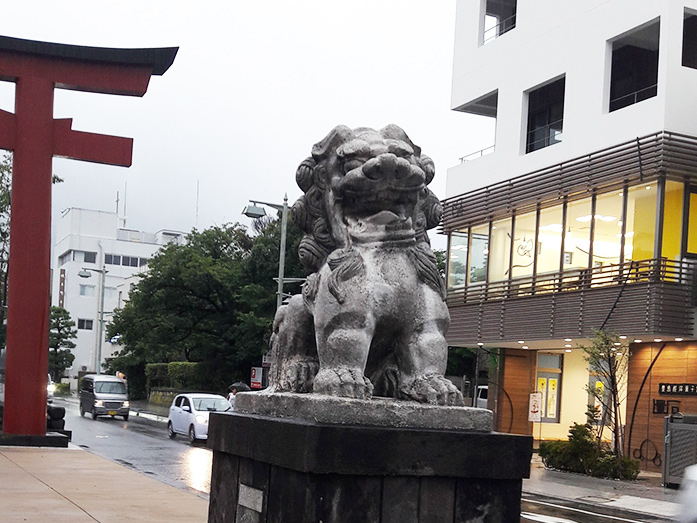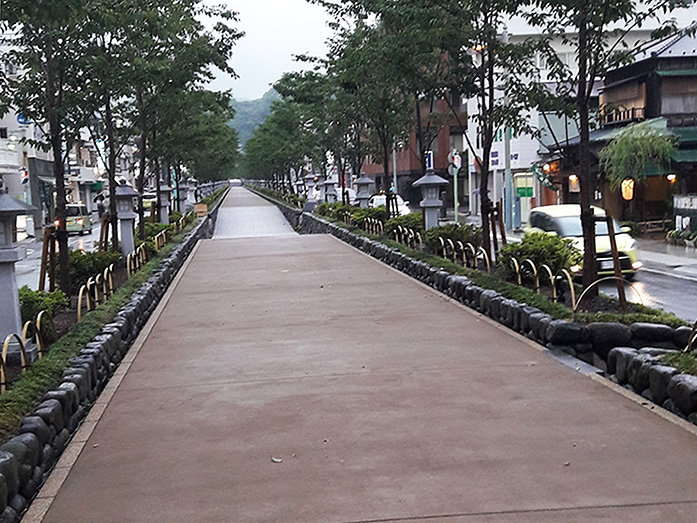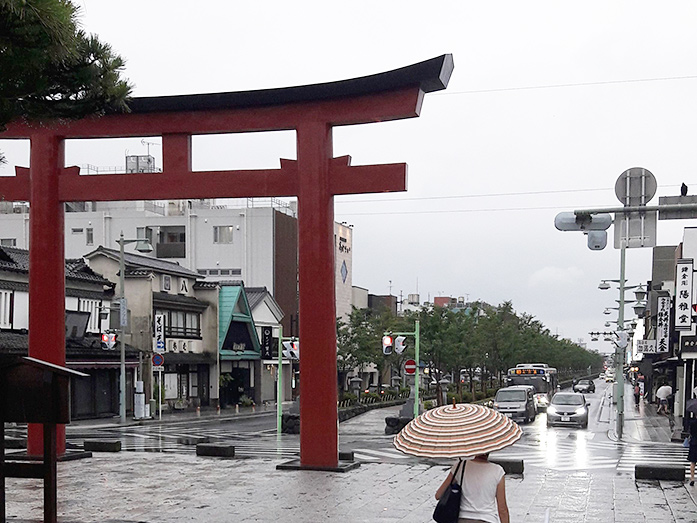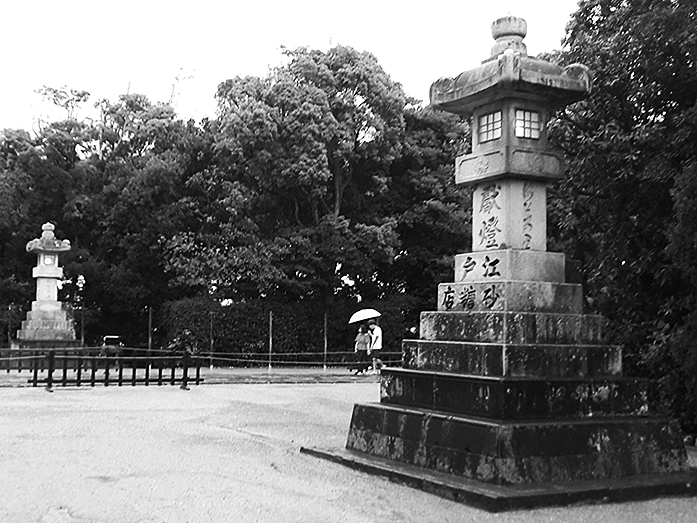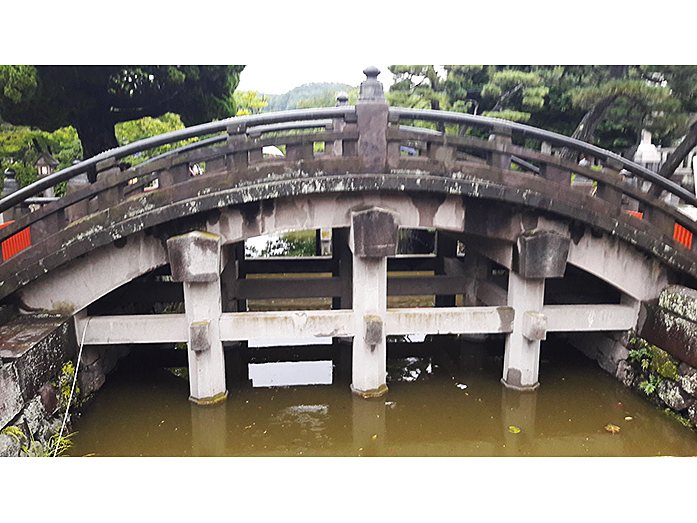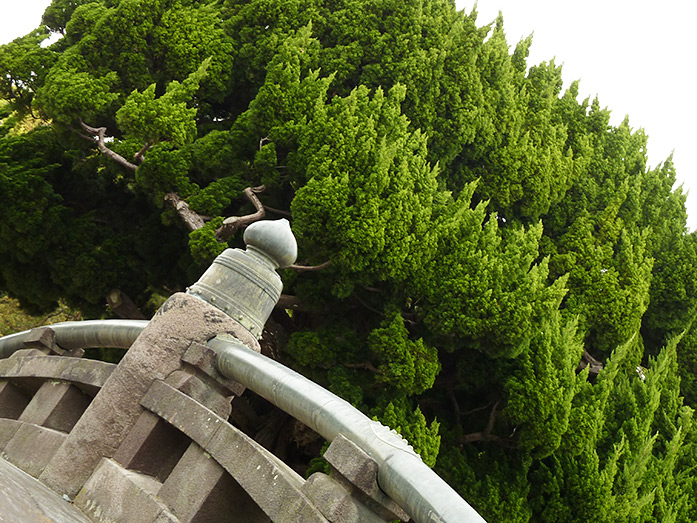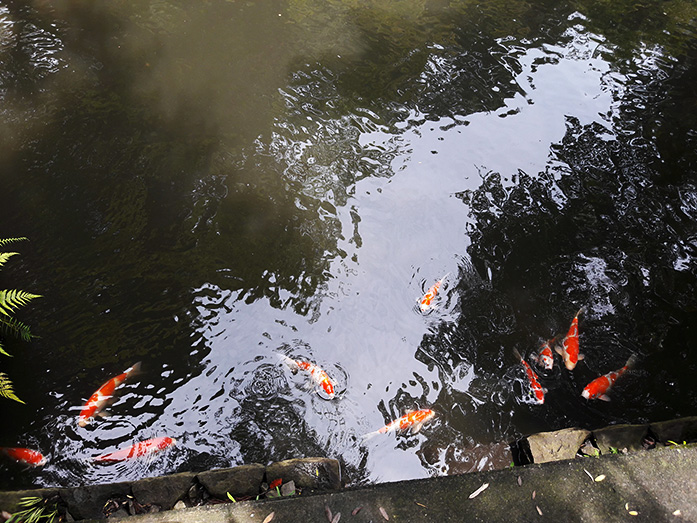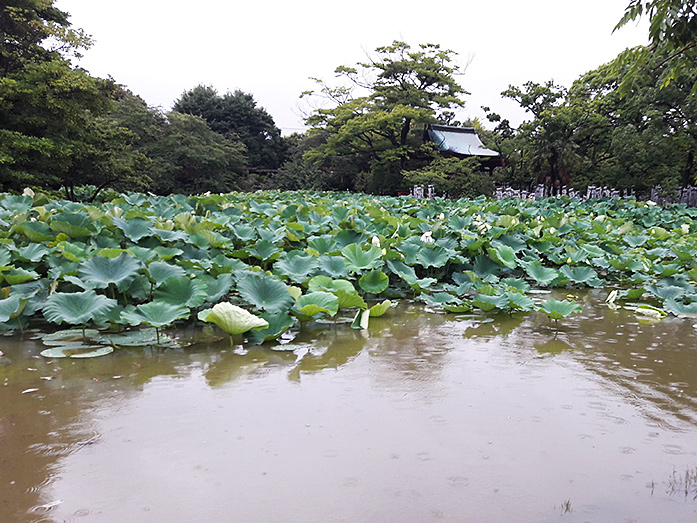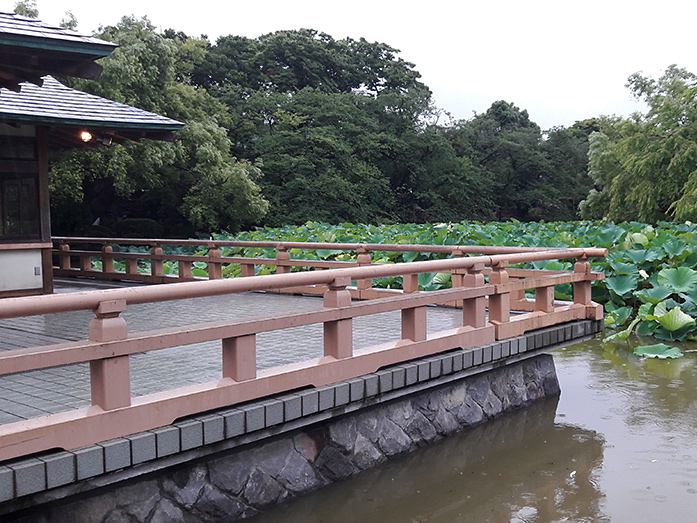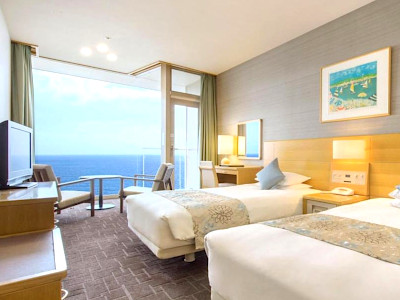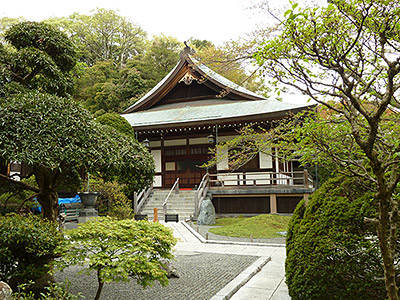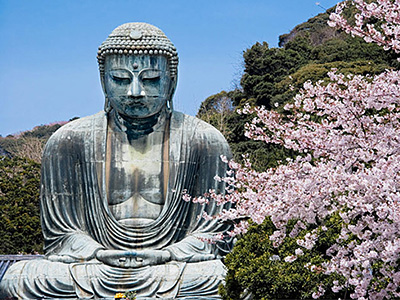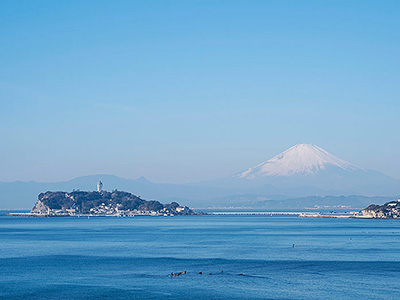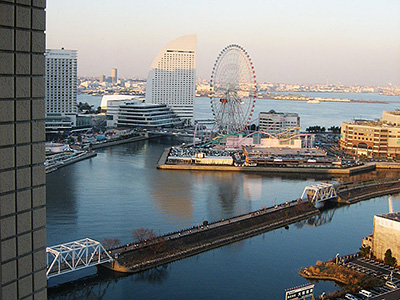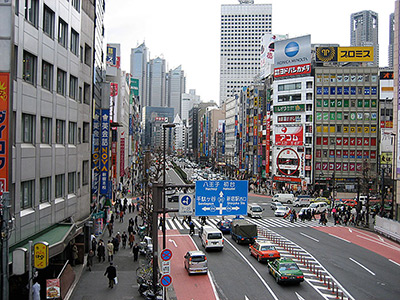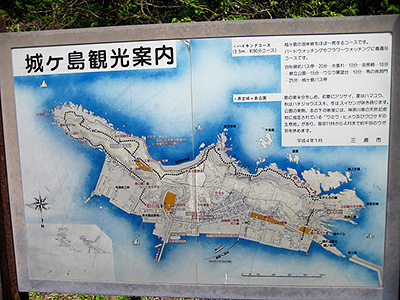Tsurugaoka Hachimangu Shrine in Kamakura
This post can contain affiliate links, which means that we may receive a small commission if you make a purchase using these links.
Facts & Figures
The beautiful Tsurugaoka Hachimangu Shrine in Kamakura is a must-see on your visit to the city near Yokohama. It is the most notable and most important Shinto shrine within the former political center of Japan. The huge shrine complex has the status of an Important Cultural Property and can be reached via a long street (Wakamiya Oji) with three torii gates (Ichi-no-Torii, Ni-no-Torii, San-no-Torii) starting near Yuigahama Beach and going right through the city center.
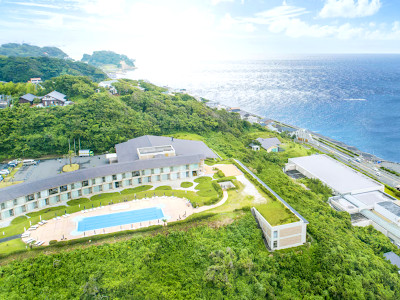 Best Places to Stay in Kamakura >
The shrine is dedicated to Hachiman, a guardian deity for warriors/samurai and the well-being of people. The shrine serves as the venue of most of the local festivals, like the Hatsumode (1st shrine visit of the new year), Setsubun, Iris Festival, Firefly Festival, Tanabata, Reitai Matsuri, Cricket Festival and many more. It is not unusual for it to be crowded throughout the year. Kamakura Hachimangu acted as a Hachiman shrine as well as a Tendai Buddhist temple which helps to explain why it is designed in typical Japanese Buddhist architecture. Tsurugaoka Hachimangu Shrine’s main features are Hongu (Main Hall ), a Maiden (Lower Worship Hall), a Treasure House, and a secondary shrine. The shrine is one of the most visited attractions in Kamakura. For example, after New Year's Day, more than 2 million people come to this place. My tip: To avoid the crowds come here in the early morning hours and enjoy the quiet atmosphere.
Best Places to Stay in Kamakura >
The shrine is dedicated to Hachiman, a guardian deity for warriors/samurai and the well-being of people. The shrine serves as the venue of most of the local festivals, like the Hatsumode (1st shrine visit of the new year), Setsubun, Iris Festival, Firefly Festival, Tanabata, Reitai Matsuri, Cricket Festival and many more. It is not unusual for it to be crowded throughout the year. Kamakura Hachimangu acted as a Hachiman shrine as well as a Tendai Buddhist temple which helps to explain why it is designed in typical Japanese Buddhist architecture. Tsurugaoka Hachimangu Shrine’s main features are Hongu (Main Hall ), a Maiden (Lower Worship Hall), a Treasure House, and a secondary shrine. The shrine is one of the most visited attractions in Kamakura. For example, after New Year's Day, more than 2 million people come to this place. My tip: To avoid the crowds come here in the early morning hours and enjoy the quiet atmosphere.
- Tsurugaoka Hachimangu Shrine:
- Opening Hours - 5:00 am to 9:00 pm (April - September)
- Opening Hours - 6:00 am to 9:00 pm (October - March)
- Special Opening Hours - daily 24hrs from the 1st till 3rd of January
- Admission fee - free
- Treasure House:
- Opening Hours - 8:30 am to 4:00 pm
- Closed - irregular holidays
- Admission fee - 200 yen (Adults), 100 yen (Children)
My tips for local activities
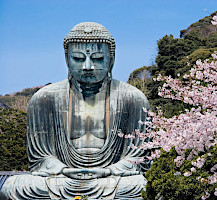
How about exploring the beautiful city of Kamakura and its historical places with a local guide? The personalized tour by our partner GetYourGuide can take between 4 - 6 hours. For more details check out this page >
History
Tsurugaoka Hachimangu shrine was founded in 1063 by Minamoto Yoriyoshi (988 - 1075), the head of the Minamoto clan, to thank the deities for victories in battles. The shrine continued to expand after its formation when it was finally moved to its current spot back in 1180 by Minamoto Yoritomo (1147 - 1199), who was the founder and first ruler of the Kamakura government. The shrine is dedicated to Hachiman, who is known to be the patron god of the Minamoto family and the Shinto god of war. In the 1190s, Wakamiya Oji, which refers to the cherry-lined path that leads to the shrine, was constructed by Yorimoto so that the oldest son of the family could visit the shrine in true style and class. Between 1871 and 1946 Tsurugaoka Hachimangu had the official status of a kokuhei-chusha. This stands for the mid-range of ranked, nationally significant shrines which were government-supported. On-site, there was a famous ginkgo tree located, which was destroyed by a storm in 2010. Before the storm, the tree was designated as a national monument of Kanagawa Prefecture. The tree was more than 1000 years old and is also the site of a terrible act of feudal violence that occurred in 1219. It is at this spot that Yorimoto’s second son was brutally murdered, an act that led to a series of brutal deaths within the royal ranks.
Location

Tsurugaoka Hachimangu Shrine is located in the city Kamakura within the Kanagawa Prefecture.
Address: 2 Chome-1-31 Yukinoshita, Kamakura, Kanagawa 248-8588, Japan
How to get to Tsurugaoka Hachimangu Shrine?
- 10min from Kamakura Station
Sightseeing spots of Tsurugaoka Hachimangu Shrine
Top:
Wakamiya Oji - It is a 1.8km long street in Kamakura leading up to the Tsurugaoka Hachimangu Shrine. At the same time, it is also the main avenue of the city. Wakamiya Oji received the status of a Historic Site and is now on the list of the best 100 streets in Japan. Part of the street is a 200m long section between the second and third gates called Dankazura. It is lined up with 400 cherry trees and is a main attraction during the Sakura Season at the beginning of April. Come here also during early summer when the azaleas start blooming. Dankazura was renovated in 2016.
Ni-no-Torii - The beautiful vermilion gate stands at the entrance of the shrine grounds.
Main Hall (Hongu) - The main hall is located at the top of a great stone stairway (62 steps) and was built in 1828 by shogun Tokugawa Ienari (1773 - 1841). Three deities are enshrined here: Empress Jingu, Emperor Ojin, and Himegami (female kami). The building is one of the main highlights of the shrine complex and is designated as an Important Cultural Property. Purification ceremonies are held here by the priests. Its architectural style is called Hachiman-zukuri. Besides that, from the top of the stairs, you can also enjoy amazing panoramic views of the surrounding area, the sea, and the shrine itself.
Treasure House - Part of the Main Hall is a small museum with an exhibition of old documents, samurai swords (tachi), archery-related items, and masks.
Maiden (Lower Worship Hall) - This open pavilion near the main stairway is used for music performances and wedding ceremonies. Shizuka’s Dance will be performed here during the Kamakura Matsuri festival in April. Shizuka Gozen (Lady Shizuka) was a court dancer (shirabyoshi) and one the most famous women in the history of the country.
Wakamiya-jinja - The shrine was restored in 1624 by the Tokugawa shogunate.
Genpei Ponds - These two famous ponds represent the Taira and Minamoto clans. These clans have been fighting each other for many years. Take a break there and enjoy the nice scenery.
Maruyama Inari Shrine - Many smaller shrines can be found on the vast shrine grounds. Maruyama Inari is one of them. The shrine is the oldest here and was built during the Muromachi period (1336 - 1573). It is dedicated to the deity of fertility and prosperity. Come here to pray for a successful business.
Shirahata Shrine (White Flag Shrine) - The shrine was built in 1200. As a unique feature, the facade of the shrine hall is painted in black with gold ornaments. Shogun Minamoto no Yoritomo (1147 - 1199) and Shogun Minamoto no Sanetomo (1192 - 1219) are enshrined here. People come here to pray for academic achievement and to pray for victory in competitions.
Crane-Turtle Stone - These stones are symbols of good fortune and it is said that when you pour water over them a turtle and crane appear.
Festival & Events (dates can change without notice)
January
New Year’s Day (from 1st to 3rd)
More than 2 million people come to Hachimangu for the traditional first shrine visit of the year. The ceremony is called hatsumode. People praying for good fortune during the next 12 months.
April
Kamakura Matsuri (from 2nd to 3rd Sunday)
The city and its history will be celebrated and it attracts thousands of visitors.
June
Firefly Release Ceremony (Hotaru-hojo-sai) (early June)
It is a festival that celebrates the beauty of life and the four seasons through the release of fireflies.
August
Bonbori Matsuri (7th to 9th)
Hundreds of lanterns can be found around the Tsurugaoka Hachiman-gu shrine.
September
Reitai Matsuri (between 14th and 16th)
Kamakura’s Mounted Archery Festival is a 3-day event. On the last day of this amazing Shinto festival at the Tsurugaoka Hachimangu Shrine, you should not miss the Yabusame highlight. It is the practice of archery on horseback.

